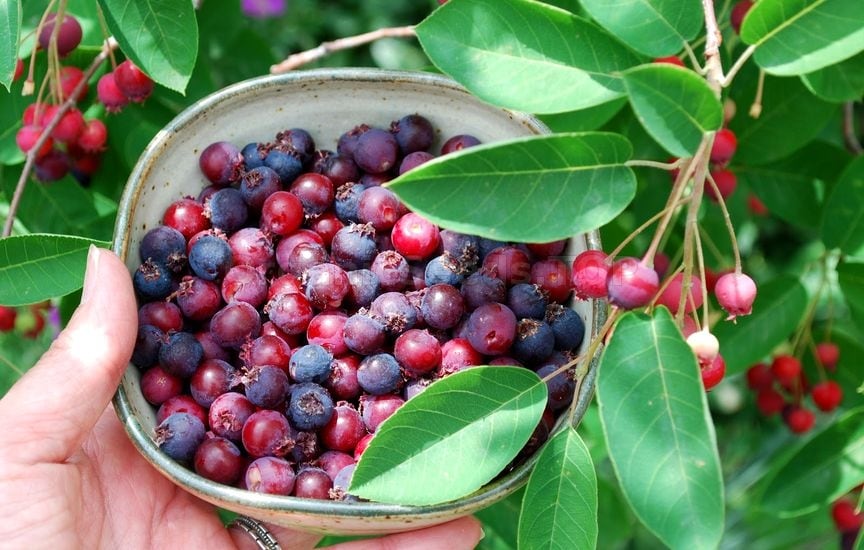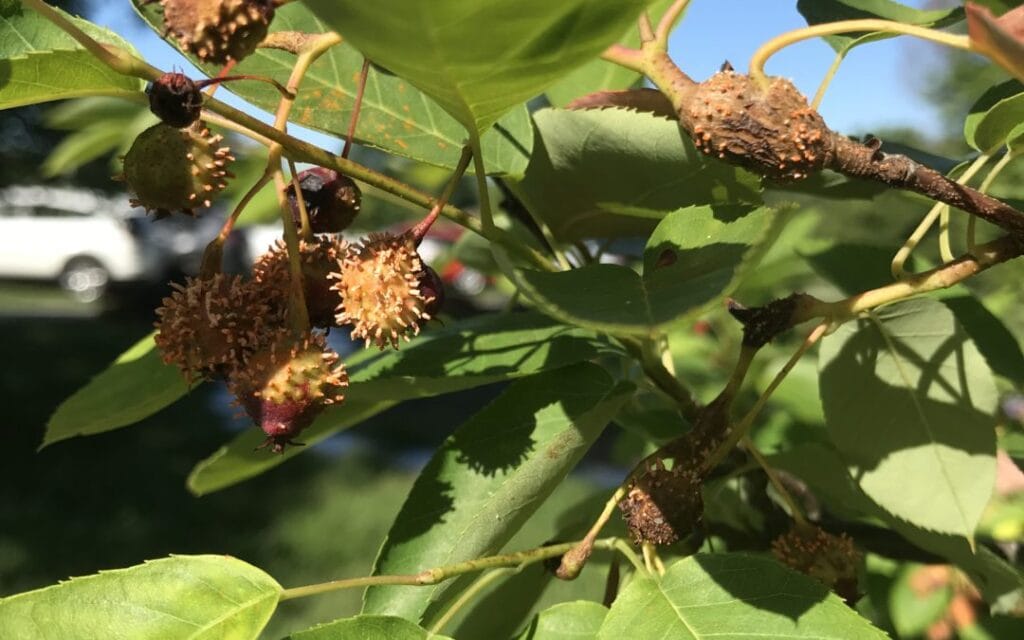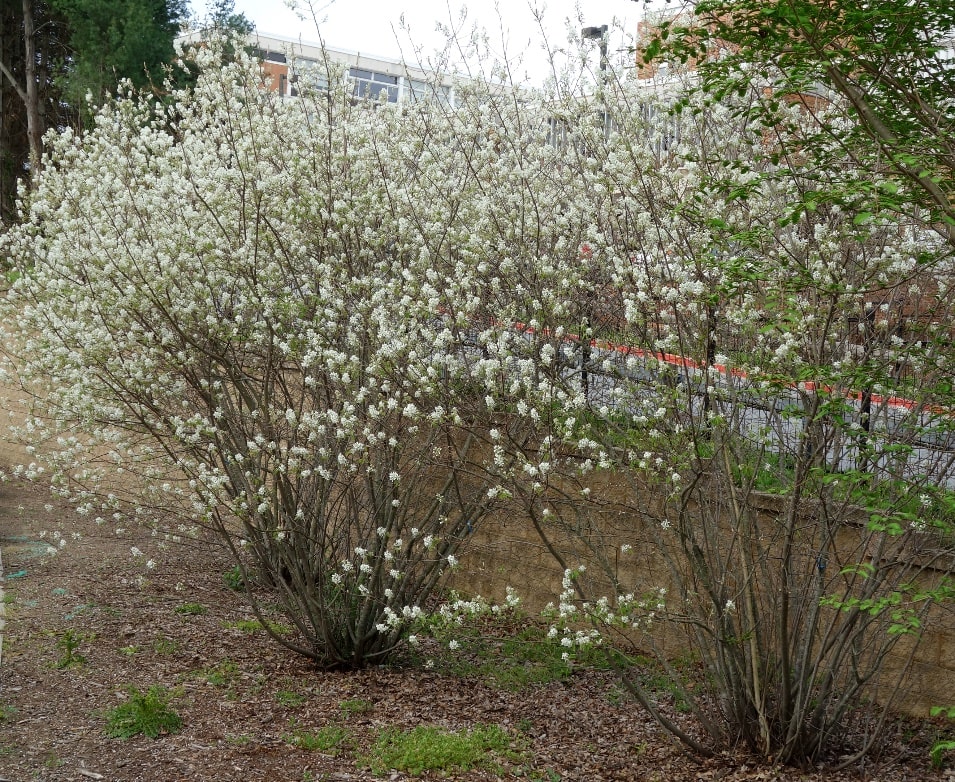If you want to keep your Serviceberry tree looking beautiful, you’ll want to know when to prune it. There are several reasons to prune your Serviceberry. First, it’s important to prune it after it blooms, after disease has affected it, and after crossing branches. This allows the tree to breathe and promotes balance, and it also helps prevent disease.
Table of Contents
When should you trim Serviceberry?
Pruning a Serviceberry tree requires careful consideration, particularly when the tree has recently bloomed. The best time to prune this type of tree is in the late winter or early spring. The first step is to inspect the tree for diseased or dead wood. It is also beneficial to remove any crossing branches. Then, use clean and sharp pruners to remove the dead wood. The main goal is to keep the tree healthy and balanced. You should also leave some old growth to encourage flower production.
Serviceberry trees can be pruned using pruning saws or secateurs. After pruning, make sure you look for diseases, insects, and pests. Insects such as pear sawfly and spider mite can be killed with soapy water sprays. In addition, you can encourage the growth of natural predators in the garden to help protect your Serviceberry tree.
While this tree is not very susceptible to many pests, you should be aware of its vulnerability. It is susceptible to Entomosporium leaf and berry spot, which causes small brown spots on leaves and a yellow ring around the spot. In addition, serviceberry plants are susceptible to aphids, spider mites, and bark beetles. While these are not major problems, you should be sure to regularly monitor your trees for signs of these pests and apply dormant oil if needed.
Serviceberry trees can be pruned to maintain their shape. The best time to prune them is when they are young. Pruning a Serviceberry tree will shape its appearance and ensure that it grows slowly and evenly. Once mature, the tree will be 15 to 30 feet tall and 25 feet wide. Its graceful foliage and small, flowering clusters provide a stunning display of color throughout the fall season.

What is the best fertilizer for a Serviceberry tree
The best fertilizer for a Serviceberry tree is organic fertilizer. However, you may have to be careful with the amount of fertilizer you apply. Serviceberries require only one application of organic fertilizer per year, and this should be done in the springtime. However, if you want to give your Serviceberry more nutrients, you can add compost or long-term organic fertilizer to the soil.
A serviceberry tree should be planted in a sunny location with good drainage. Full sunlight is ideal for this type of tree, but it can tolerate partial shade as well. This type of tree is best grown in soil that has a pH level between 5.5 and 7.0.
Serviceberry trees need a rich soil and good light for flowering and fruiting. They also require good moisture. Care should be taken to protect them from birds during the summer. They can be harvested between June and August. The fruit is dark in color and should be removed on a regular basis. Dead branches should be cut back periodically to prevent insects from invading your tree.
Serviceberry shrubs grow best when planted in spring or autumn. When planting serviceberry shrubs, be sure to keep the soil around them moist and weed free. A three-inch layer of mulch on the soil around the trunk is ideal to retain moisture and suppress weeds. Then, you should regularly water the Serviceberry shrub to ensure optimal growth. The best fertilizer for a Serviceberry tree is organic fertilizer. Apply it to the soil every early spring for young plants and blood meal once a year for older shrubs.

What causes rust on Serviceberry?
Rust on Serviceberry trees is an unsightly, disfiguring fungus that affects this plant. The fungus, known as a Cercospora juniperi, lives on serviceberry trees all year long and is spread by spores that can travel up to 100 feet. While the fungus is harmless to other plants, it makes the berries on Serviceberry trees inedible. It can affect different pairs of trees, so it’s important to know which trees are affected.
Serviceberry trees are susceptible to cedar-quince rust. It attacks serviceberry leaves in warm, humid air and requires a rose or cypress tree as a host. It can also be carried to serviceberry trees by wind. Affected berries will produce yellow, orange, or red spore masses.
Rusts are fungal infections that cause leaf and branch decay. They form circular lesions on the underside of the leaves, and spores protrude from them in rosette fashion. Rusts also affect the twigs, and can cause them to thicken and distort. They can cause premature leaf drop, which can add stress to the tree.
Several fungi cause rust on serviceberry trees. Gymnosporangium species cause cedar-quince rust and cedar-serviceberry rust. The fungus is also responsible for cedar-hawthorn rust. The affected trees may also be attacked by fire blight, powderew, and Entosporium leaf spot. In addition to these, they are susceptible to attacks from aphids, deer, and Japanese beetles.

How do I prune my serviceberry?
Pruning a serviceberry tree is not an unusual process. These small shrubs bloom on old wood, which develops buds for next year’s flowers. They should be pruned after the blooming season to create an open airy structure and to prevent diseases. Pruning should be done in the fall or winter. Removing dead, damaged, or crossing branches during this time helps maintain the tree’s health and promotes better air circulation. Incorporating Japanese tree pruning techniques can further refine the tree’s shape and enhance its aesthetic appeal, emphasizing balance and harmony. With proper care, a well-pruned serviceberry tree will thrive and provide vibrant blooms year after year.
To keep your serviceberry shrub healthy and vigorous, you should prune it annually. The best time to prune a serviceberry tree is in late winter or early spring. Start by removing any dead wood or branches that are crossing each other. Also, leave some of the old wood for the fruit to form on. Then, apply a balanced fertilizer to keep the tree healthy and productive.
Although serviceberry trees are generally healthy and pest-free, they can occasionally be attacked by insects and diseases. Some pests that may attack your serviceberry tree include aphids, bark beetles, and flatheaded borers. While these insects can cause a nuisance to your serviceberry tree, they are unlikely to cause any lasting damage. To help prevent insects from destroying your serviceberry tree, you can use an organic insecticide. Alternatively, you can release ladybugs in the area where the tree grows.
Serviceberry trees can be a great addition to your yard. They are hardy to zone 4 and thrive in soils of most types. As a native shrub, serviceberry trees grow 1 to 2 feet per year. Once established, serviceberry trees are drought tolerant and easy to care for. These trees are also a valuable resource for wildlife. There are over 58 species of Virginian wildlife that rely on serviceberry trees for food, water, and shelter.
How do I keep my serviceberry small?
Serviceberries are small and low-maintenance trees. They grow to be 15 to 25 feet tall and have a dark green to purple foliage with a waxy texture. Their blooming period occurs in the spring. When pruning, prune out dead or diseased wood and remove cross branches. Serviceberries are best kept small, but if you have a larger tree, you can prune it to a single stem.
Serviceberries grow best in early spring or early fall, when temperatures are still cool and the ground is moist. This will help establish their root system before the summer heat sets in. If planting in the spring, remember to water them regularly. Otherwise, their flowering and berry production will be delayed. Most serviceberry species prefer full sunlight, but some tolerate partial shade. When planted in partial shade, flower production will be less effective.
As a native plant, serviceberry trees are easy to grow. They tolerate a wide range of soil types, but prefer a moist, well-drained loam. The soil should be slightly acidic. It does not need a lot of fertilizer, although it will need supplemental water during the first year. After that, serviceberries do not need supplemental water. If you do decide to plant one in your yard, remember to plant it in a sunny location.
While serviceberry trees can be planted as a shrub, you must be careful not to plant them too close to other trees. They should be planted at a distance of eight to ten meters from other plants. Ideally, you want to plant them as a solitary plant in a meadow. In addition to proper spacing, cut back the shoots by about a third prior to planting. Make sure you provide them with the proper nutrient supply before planting.
How do you plant autumn brilliance serviceberry?
If you’re looking for a colorful plant that delivers visual interest year-round, Autumn Brilliance serviceberry is a great choice. This versatile shrub can be grown in full sun or partial shade and will grow to about 20 feet in height. Once established, it will tolerate a variety of soil types and is relatively drought tolerant.
In order to maintain the health of your Autumn Brilliance serviceberry shrub, prune it regularly. Clip off suckers at the base of the trunk and remove dead or damaged branches. In addition, prune off any branches that rub together. Pruning is best done in autumn or late winter before bud break.
Serviceberry can be pruned into a small tree or a large shrub. If you prune it early in the year, you can reduce the sap loss and shape the plant. Remove dead branches and keep them protected from birds, as they can cause problems. Generally, serviceberry trees have few major pests or diseases, but if you do have any concerns, it’s best to follow a professional’s care instructions.
Autumn Brilliance serviceberry can be planted in most parts of the country. It needs a well-drained soil that is medium in moisture. It does best with some compost added when planting. It looks great as an underplant alongside ground covers, perennials, and hedges. It’s also ideal for use as a windbreak or privacy screen. Plant it in groups of about 12 feet apart for best effect.